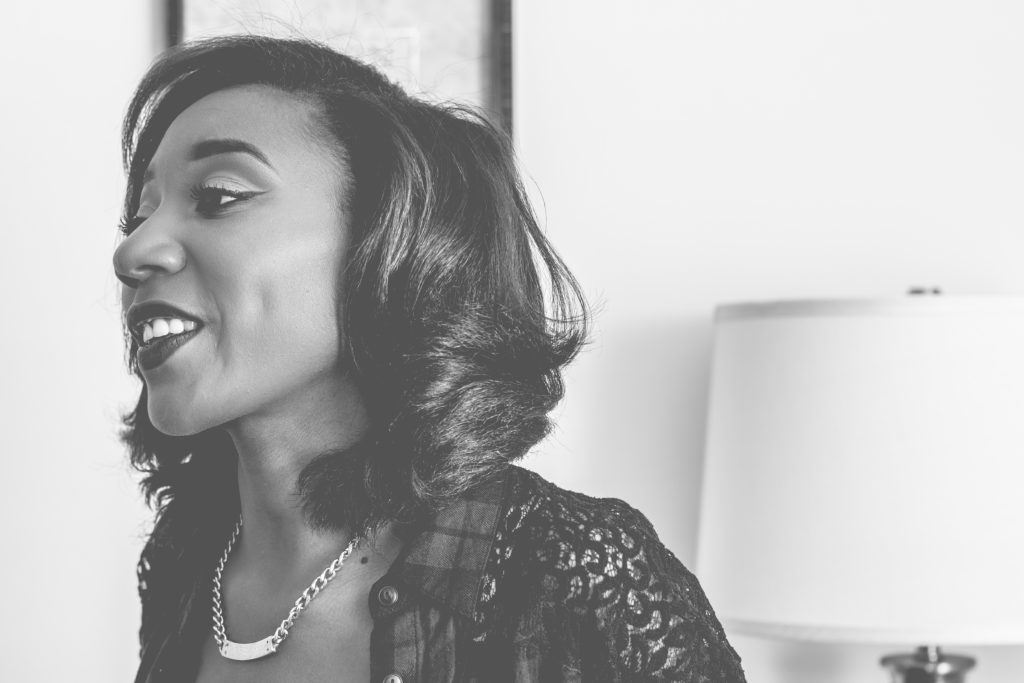Since the beginning of the Donald Trump administration, it feels like everyone in the entire country is on edge. Multiple issues, from racism to sexism, have come to the forefront. And for many, everything has changed. Expectations and standards of compassion and decency are higher. But that has made our society’s pitfalls more obvious.
As a Black woman writer who works virtually, I have the ability to curate my social interactions.
The other day, I admitted to my friend — another woman of color — that I haven’t interacted with many white people recently, apart from a few friends and acquaintances or small talk with baristas and store owners.
The last time I interacted with handfuls of white people on a daily basis was at my last job, and though I adored the experience and company, I often felt uncomfortable, spotlighted, and even gaslighted at work.
Later, when I thought more deeply about this, I realized that after the election, my bonds with people of color became stronger. Naturally, I began seeking and strengthening my relationships with people of marginalized identities.
While living an introverted lifestyle as a freelance writer and striving to build new communities, I realized that I became more sensitive, bothered and angered by the microaggressions I faced when interacting in certain predominantly white spaces.
I became more aware of gentrification, my natural hair, and the way I dance when in these spaces. I also noticed the overwhelming white guilt some white people feel about Trump’s presidency.
Most importantly, I remembered how these feelings can be magnified when in predominantly white spaces.
Microaggressions — brief behavioral, verbal, and situational actions, comments, or gestures that are degrading, ignorant, or insulting — can appear in unintentional or confrontational ways, and they never feel good.
However, workplace dynamics can make it especially hard to communicate frustrations with microaggressions for fear of disrupting workplace etiquette, being silenced, or putting our jobs in jeopardy.
I am on a job search of my own, and despite knowing it is competitive, I often feel like my resume and cover letters are invisible and ignored.
Conceptions that employers deny and discriminate applicants with resumes with “ethnic-sounding” names, or against applicants with natural hair or dreadlocks, can make the job search feel even more daunting.
Beyond applications, when speaking to close Black female friends, I am reminded of the struggles we can endure once we’re in the office. I often wonder how these circumstances have changed in the Trump era.
According to a 2015 study in the American Psychological Association, Black women are, and have been, exponentially accelerating in the work and education fields. Between 2000 and 2020, there will be an 18% increase in Black women working in the U.S. labor force.

We are also the largest demographic of women of color to acquire higher education degrees. From 1991-2001, the number of Black women earning master’s degrees increased from 10,7000 to 26,697, says the APA study.
While more Black women will be entering the workforce, many with higher degrees, it’s no secret that some Black women have difficulty entering positions of power or leadership in their careers: for white women, this is considered a glass ceiling, but for Black women, it is a concrete ceiling.
The intersectional identity of being a Black woman challenges our climb up career ladders, and this is even more challenging for nonbinary Black women, transgender Black women, queer Black women and Black women with different abilities.
Under Trump, Black, POC and other marginalized identities should be pushed to the forefront. Our experiences and identities are imperative to reforming and strengthening the vision of a company. After all, marginalized identities in leadership roles are crucial to social change and directly challenge the structure of companies from the inside out.
I spoke with a good friend, Donna Larkin*, a queer, cisgender lack woman who has been working at a nonprofit organization as a writer for two years and entered a new role a little over a year ago.
Larkin had the usual complaints working in her office: fascination over her changing hairstyles and headwraps, their overall initiative to become more “woke” but uncomfortable ways of going about it, i.e. asking for Black opinions. But she had a new story to tell
Her anecdote revealed 3 microaggressions that already existed, but have become more prevalent in this Trump age as the inequalities and failures of our government is more visibly questioned, and the state of our social well being is shattering.
1. Not being trusted to do specialized work
Donna has been working in the same position for over a year and started at the same time as a white female coworker. The two collaborated on several projects, and Donna was even asked to teach her certain skills, as she has more experience in their positions.
“Just a few months shy of a year, we were separated as a work team for untold reasons,” Donna said. “Shortly thereafter, I was told that I no longer needed to contribute to certain verticals within the company (though it is explicitly stated that I do so in my job description) and that the co-worker I trained will chiefly be taking on those responsibilities.”
The APA study suggested that some companies neglect to hire or promote Black women to higher positions because they believe we aren’t intelligent, skillful, or savvy enough to tackle leadership roles.
This notion is outdated, racist, and sexist, not to mention detrimental to the growth of a company: diverse perspectives and experiences are necessary to making prosperous decisions and improving a company’s culture and vision.
Although Donna’s role is not an executive one, she sensed that her white colleague was preferred over her, despite the fact that Donna mentored this colleague and has more experience.
“From that point on,” she continued, “it’s been incredibly obvious that they’ve groomed that co-worker and supported her professional development […] while I’ve noticed that I’ve had nothing of the such since I came onboard at the same time last year.”
It should also be noted that, as Donna’s coworker’s role elevated, Donna’s role declined: some of her responsibilities were taken away and given to her colleague.

2. Being labeled the ‘angry Black woman’
Noticing the disparities in treatment between herself and her coworker, and disappointed about her role changing, Larkin decided to speak to her manager about the matter.
During the conversation, her manager advised her to “stay calm” and approach any further conversation on the matter with civility. Larkin said that not once during the conversation did she lose her cool or act unprofessionally.
The angry Black woman stereotype is so normalized in our culture, that any form of resistance we express can be mistaken as us getting angry or riled up.
This internalized bias devalues the problems we try to bring up because we are immediately labeled angry and emotional and our words or ideas not taken seriously. It is a frustrating, unproductive stereotype that I’ve experienced far too often in social settings as a Black intersectional feminist.
I can see the regard fading from a person’s face as soon as they think I am getting angry or passionate about a subject, which sometimes makes me try harder to remain calm and stoic in situations just be taken seriously — even if I deserve to be angry.
“For my manager, who verbally touts that she understands and is sympathetic to what POC go through […] and is aware of the “Angry Black Woman” stereotype, to use the words so pointedly felt violent and dehumanizing.”
It may not have been the manager’s intention to perpetuate the angry Black woman trope, but that’s the thing about microaggressions: they show up in subtle, unexpected ways. Had Donna been white, would her manager have felt the need warn her to stay calm?
This saddens me, because today, POC voices and concerns are more necessary than ever, particularly in the workplace. Several white people I know are genuinely interested in listening to our concerns because they know that for too long, whiteness has shut down our voices.
Deprogramming internal biases is something white people have to consciously and consistently work on; the best way is by listening to us and validating our experiences.
3. Emphasizing White Feminism in the office
When I asked Donna how microaggressions in the workplace have changed post-Trump, she brought up white feminism.
“The growing presence and celebration of white feminism dressed up as intersectional feminism has become taxing on my day-to-day interactions with my co-workers.”
Yes, too often, white feminists’ white privilege serves to degrade and diminish people of color.
“White women need to address and take responsibility for their role in the oppression of Black women,” said Rachael Edwards on Wear Your Voice Mag “White women are still white. This means that they have the capacity to operate in their whiteness to the harm of women of color.”
I wasn’t surprised that white feminism and the erasure of intersectional ideas would creep into the workplace, especially during such a tenuous social and political climate.
These aggressions, however, are unique because rather than singling out a person of color, they overemphasize whiteness and feminism: a form of exclusion by ignoring.
I found that, immediately after Trump’s win, the people who felt most attacked and surprised were white women. For people of color and LGBTQ communities, we weren’t surprised that racism, sexism, homophobia and anti-immigrant values could prevail — what’s new?
As white feminists strive to regroup and recover after this political blow, they could still forget us in the process, and support one another without regarding our unique issues and struggles. This could also explain why Donna felt her white co-worker was receiving more professional cultivation than she was.

Employers want to make their companies more diverse, but to what extent?
Donna’s story is only one example of microaggressions Black women and other women of color may face in work settings, but her story is by no means unfamiliar or unique — part of the way she gets through these feelings is by confiding in other co-workers of color.
“It’s both sad and comforting that we’re all going through it together, but we try to provide support and advice to one another so that we may succeed despite these endless interactions,” she said.
A study by Gallup found that, overall, some workers said they feel safe in the workplace post-Trump (18% feel safer, and 68% feel the same), but Black and LGBT workers specifically noted feeling more unsafe (12%).
More than half of the workers they asked — 59% — stated that their companies discussed issues in inclusion and diversity, which is a great change — if things actually change.
Today, some companies are answering calls for diversity and inclusivity, but does that mean marginalized identities will be seen in roles of power and, more importantly, enter workplaces that make them feel comfortable, safe and valued?
Donna’s organization wants to make their workplace more diverse and inclusive but, so far, she hasn’t noticed many changes in the roles where they count.
Similar to filmmakers claiming their movies are inclusive by adding characters of color in the background, does it make a difference if the protagonists are all still white?
*Name has been changed
Originally published on Everyday Feminism.
Alisha Acquaye is an Everyday Feminism Reporting Fellow. Alisha is a Brooklyn-born writer, tea enthusiast, and lipstick babe who loves creating all-natural potions for her hair and body. Her writing focuses on race, gender, body, beauty, social issues and pop culture. You can find her work in Elle, The Establishment, Teen Vogue, and OkayAfrica. She’s low-key obsessed with Trader Joe’s, Chopped, and creating Spotify playlists.

